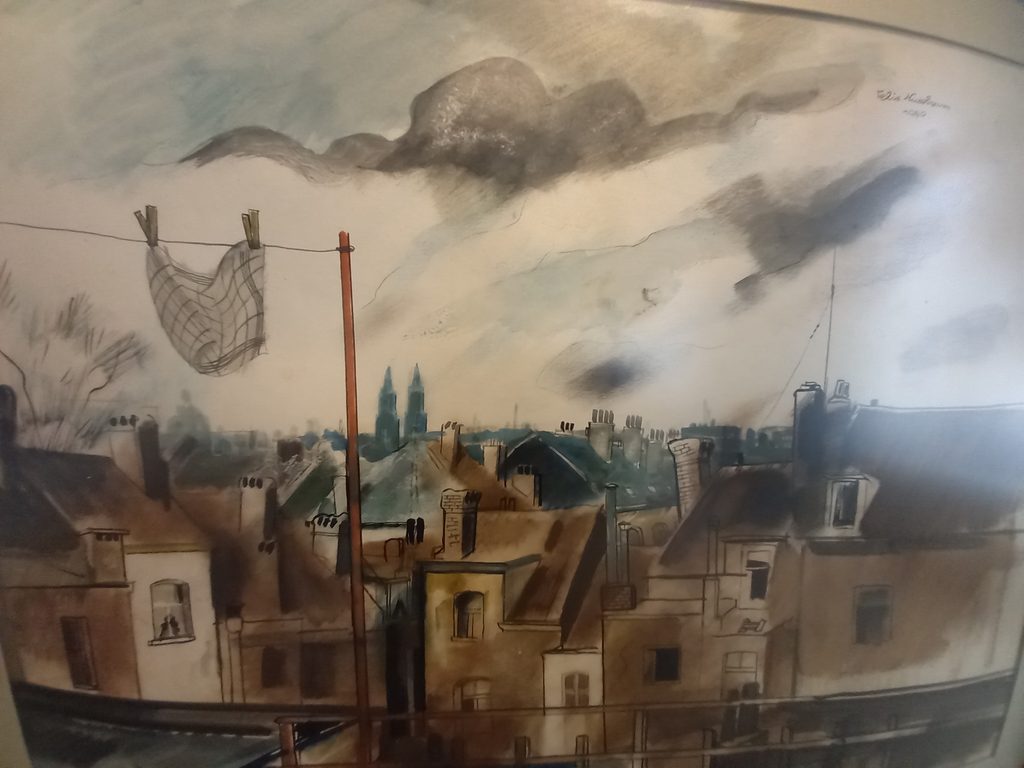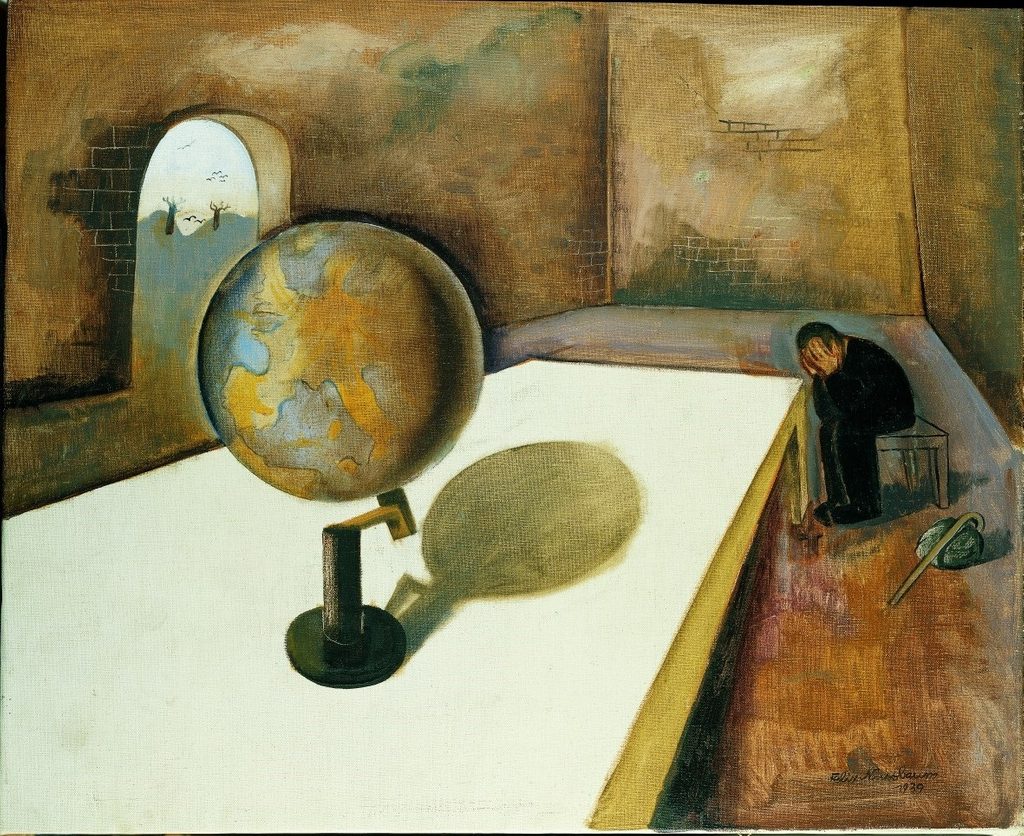People sometimes forget the origins of the European Union. But you can find many reminders in Brussels of the events that led Europeans to form a union on 9 May 1950. One of the most striking are two bronze memorials embedded in the pavement at Rue Archimède 22.
They commemorate the German-Jewish artist Felix Nussbaum and his Polish wife Felka Platek. The couple fled from Germany after the Nazis set fire to Nussbaum’s Berlin studio in 1932.
They had been on the run for five years, renting furnished rooms with hideous wallpaper, when they finally found an apartment in Brussels. “I think we can stay here,” Nussbaum wrote.
Related News
Nussbaum painted views from his balcony looking across the rooftops. Then the Germans marched into Brussels. Felix and Felka hid for two years in a small attic room.

Rooftops in Brussels, Felix Nussbaum, 1940, painting at the Jewish Museum in Brussels
They were finally arrested in June 1944 after a friend gave away their hiding place. Nussbaum’s last painting bore the ominous title “The Triumph of Death.” The couple were deported on the last train to Auschwitz and killed a few weeks later.
A plaque was placed outside their last hiding place in 2005 by the German School in Brussels. The two little stolpsteinen, or stumbling stones, were added in 2011. They are a reminder of a dark era when European unity was a distant dream.

"The Refugee" (1939), by Felix Nussbaum, © VG Bild-Kunst, Bonn 2014
In January 2023, a copy of Felix Nussbaum’s painting “The Refugee” was unveiled in the European Parliament in Brussels. The painting reflects Nussbaum’s fear and desperation on the eve of World War II. As Nazi Germany’s threatening shadow sweeps across Europe, the artist is left with no escape route.
A plague next to the painting says: “His story is shared by millions of other victims of the Holocaust. The Parliament honours their legacy by never forgetting, never being complacent and by always speaking up.”
Derek Blyth’s hidden secret of the day: Derek Blyth is the author of the bestselling “The 500 Hidden Secrets of Belgium”. He picks out one of his favourite hidden secrets for The Brussels Times every day.

